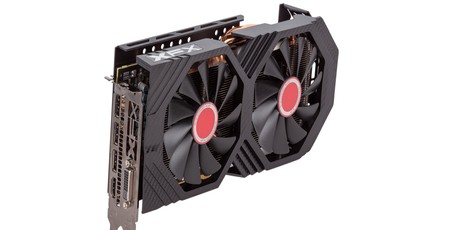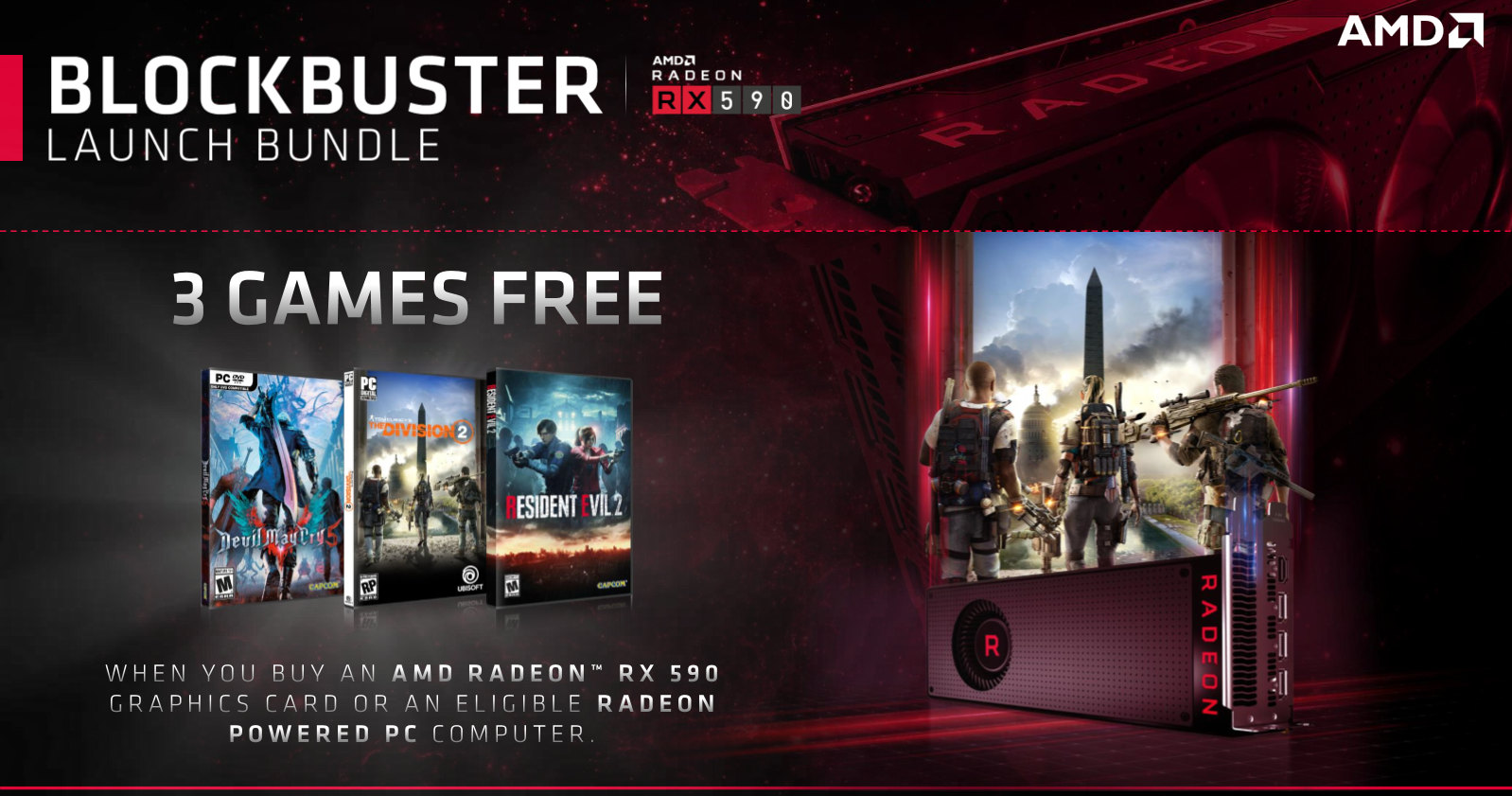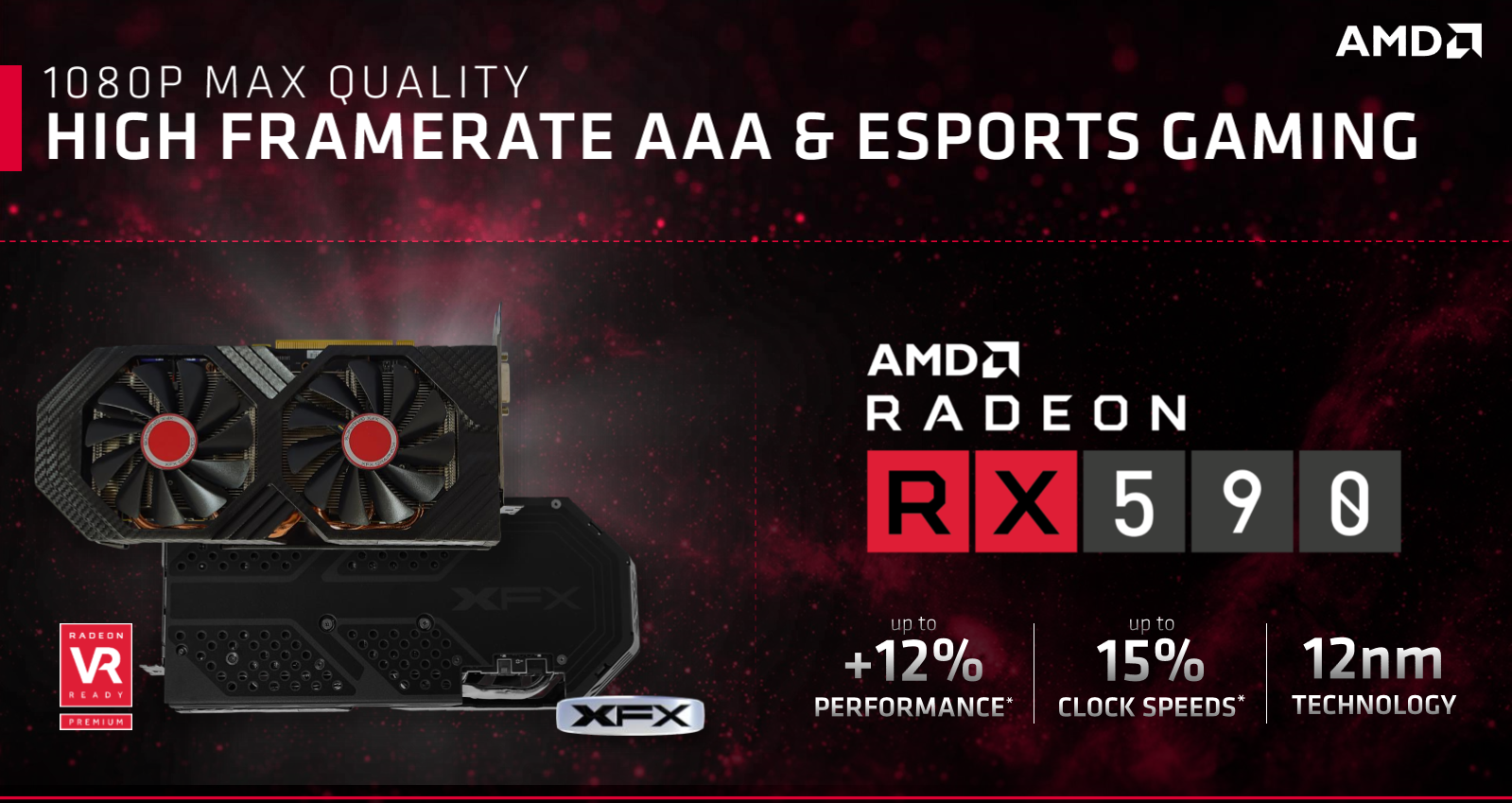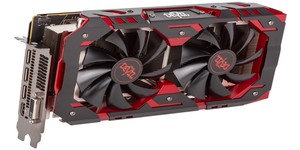It’s been a prolonged period of boredom and frustration for most PC gamers, as the sub-£300 GPU market has been largely stagnant for some time. Nvidia introduced its GTX 1060 over two years ago in July 2016, and AMD followed up with the RX 580 in April of last year. The mining craze kept even these parts out of reach for many, but since that subsided this part of the market has returned to normal and stayed there largely unchanged beyond some GTX 1060 memory tweaks. In fairness, both parts do remain relevant on the performance and features fronts, but the excitement of late has exclusively been focussed around the upper echelons.
Today, AMD is reminding us that more realistic budgets still exist with a rebuild of the RX 580 (I must not write RTX, I must not write RTX...) on a new and slightly improved process node resulting in the RX 590. The TL;DR is that this allows for higher clock speeds and performance to be reached at the cost of power consumption, but AMD felt it was enough of a change to warrant press sampling and a name change, and we agree. First up, this is how its specs compare – spot the difference!
| AMD Radeon RX 590 | AMD Radeon RX 580 | AMD Radeon RX 570 | |
| Architecture | GCN 4th Gen | GCN 4th Gen | GCN 4th Gen |
| Codename | Polaris 10 (?) | Polaris 10 | Polaris 10 |
| Boost Clock | 1,545MHz | 1,340MHz | 1,244MHz |
| Base Clock | 1,469MHz | 1,257MHz | 1,168MHz |
| Stream Processors | 2,304 | 2,304 | 2,048 |
| Layout | 4 SEs, 36 CUs | 4 SEs, 36 CUs | 4 SEs, 32 CUs |
| Texture Units | 144 | 144 | 128 |
| Rasterisers | 4 | 4 | 4 |
| Tesselation Units | 4 | 4 | 4 |
| ROPs | 32 | 32 | 32 |
| Transistors | 5.7 billion | 5.7 billion | 5.7 billion |
| Die Size | 232mm2 | 232mm2 | 232mm2 |
| Process Node | 12nm FinFET | 14nm FinFET | 14nm FinFET |
| Memory | 8GB GDDR5 | 8GB GDDR5 | 4GB GDDR5 |
| Memory Date Rate | 8Gbps | 8Gbps | 7Gbps |
| Memory Interface | 256-bit | 256-bit | 256-bit |
| Memory Bandwidth | 256GB/sec | 256GB/sec | 256GB/sec |
| TDP | 225W | 185W | 150W |
Architecturally, there are zero changes to speak of; this is simply the Polaris 10 GPU (first launched with RX 480 in June 2016) fully enabled and built on 12nm FinFET instead of 14nm FinFET. The new process sees the boost clock (the maximum speed the card will always run at under load, thermals permitting) rise 205MHz, or 15 percent, and AMD reckons you’ll see up to 12 percent more performance compared to RX 580, but this does cause a hefty 40W rise in power consumption too, so it’s hardly an efficient means of ramping things up. Exact clock speeds and power consumption will vary by card, as there’s no fixed reference design; it’s meant to be an easy swap into existing designs for AMD’s partners.
This is an 8GB only part, with AMD still using 8Gbps GDDR5, meaning there will be no increase in memory bandwidth. Since faster memory is readily available (and being exploited by Nvidia in its own product refreshes), this is likely down to controller limitations.
The RX 590 is a value-focussed launch with AMD pushing hard to ensure that stock lands and remains at the MSRP of $279 or £250 here in the UK, which we’re told our XFX card will indeed do. That brings the fight directly to the GTX 1060 6GB, and to sweeten the deal further AMD is bundling three AAA games: Devil May Cry 5, Tom Clancy’s The Division 2, and Resident Evil 2, all of which should release in early 2019. This game bundle is also being extended in full to both RX Vega 56 and RX Vega 64, while RX 580 and RX 570 customers can pick any two of the three games.
Speaking of, this pricing should also see the RX 580 come down in price, since the two are going to coexist in the market at different price/performance levels.
For this reviewer, it feels strange to think of £250 as value-focussed, but in the wider context of the current market it absolutely is. AMD is targetting 1080p gameplay with the RX 590, which still accounts for over 64 percent of gamers’ primary desktop resolution according to the latest Steam Hardware Survey. AMD’s own research points to a figure of 33 percent for the fraction of gamers that purchase cards in the $199 to $399 segment (the majority, of course, will be sub-$199), and claims that such gamers are still likely to play demanding games where even 1080p can strain hardware.
In terms of features, they all carry over from the RX 580, most notably FreeSync, which AMD is keen to emphasise is very widely available now and at a huge range of price points.
Now that we know what RX 590 brings to the table, let’s take a look at XFX’s ‘Fatboy’ edition (yep, really).

MSI MPG Velox 100R Chassis Review
October 14 2021 | 15:04











Want to comment? Please log in.